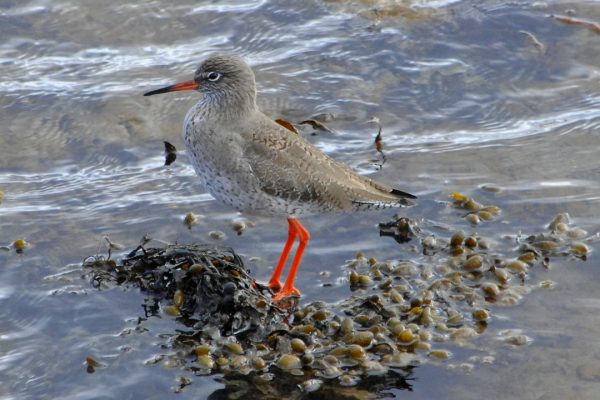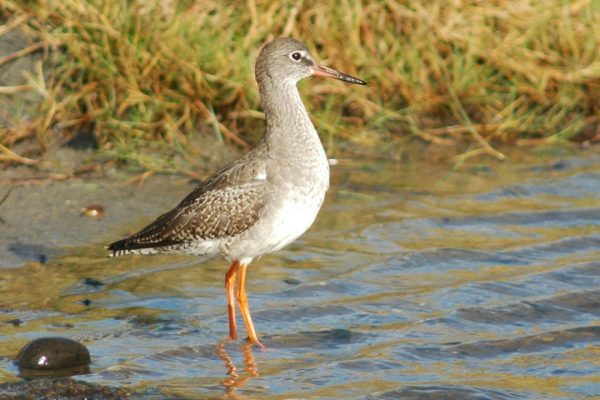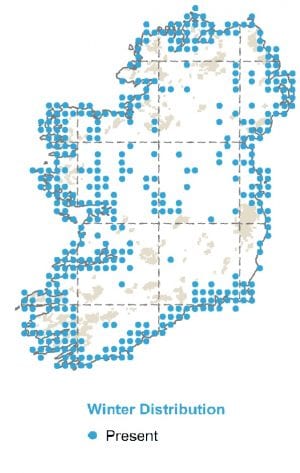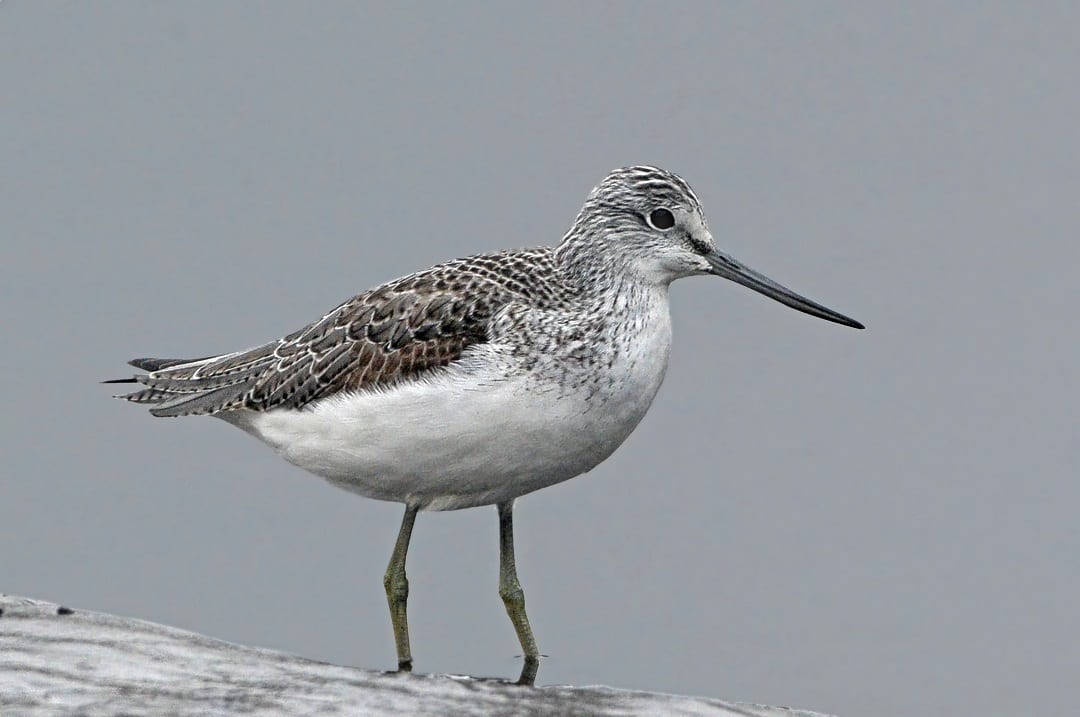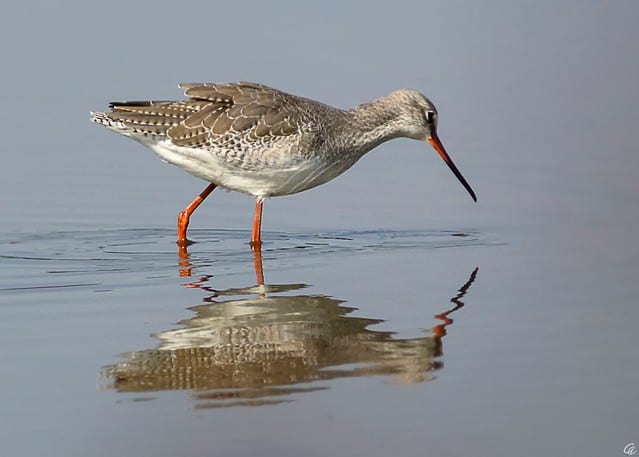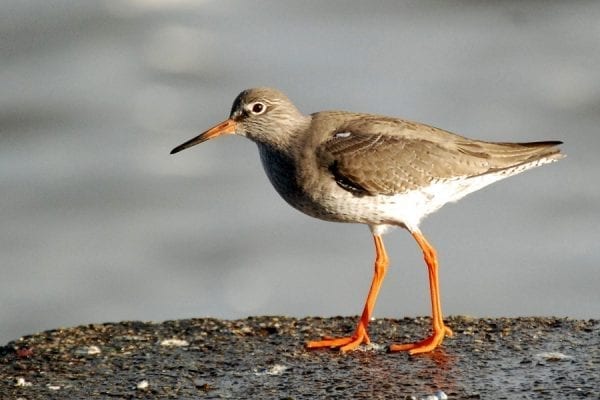
Redshank
| Irish Name: | Cosdeargán |
| Scientific name: | Tringa totanus |
| Bird Family: | Waders |
red
Conservation status
Conservation status
Status
Resident, winter visitor from Iceland and passage migrant (birds on passage from Scandinavia/the Baltic breeding areas to west African wintering areas). Highest numbers occur during the early autumn, when there is overlap of the populations.
Identification
As the name suggests, its most distinctive feature is the leg colour - bright red. A common wader of wetlands throughout the country, though mainly coastal estuaries in winter. A generally mouse brown bird with dark streaking. Bill medium length and straight, reddish at the base. Legs relatively long. Can occur in quite large numbers at the larger estuaries.
Voice
An hyterical, piercing "tew…hoo, tew…hoo", always loud - often scaring other birds away. Persisitent "tew.. tew...tew.." at breeding grounds.
Diet
Detect prey visually and feed mostly during the day along the upper shore of estuaries and along muddy river channels. Feed singly or in small groups, and their prey consists mostly of Hydrobia sp., Corophium sp. and nereid worms
Breeding
Nests on the ground in grassy tussock, in wet, marshy areas and occasionally heather. Adults often keep guard standing on fence posts or high rocks. Breeds mainly in midlands (especially Shannon Callows) and northern half of the country, but not commonly anywhere in Ireland.
Wintering
Winters all around the coasts of Ireland, Britain and many European countries. Favours mudflats, large estuaries and inlets. Smaller numbers at inland lakes and large rivers.
Monitored by
Blog posts about this bird
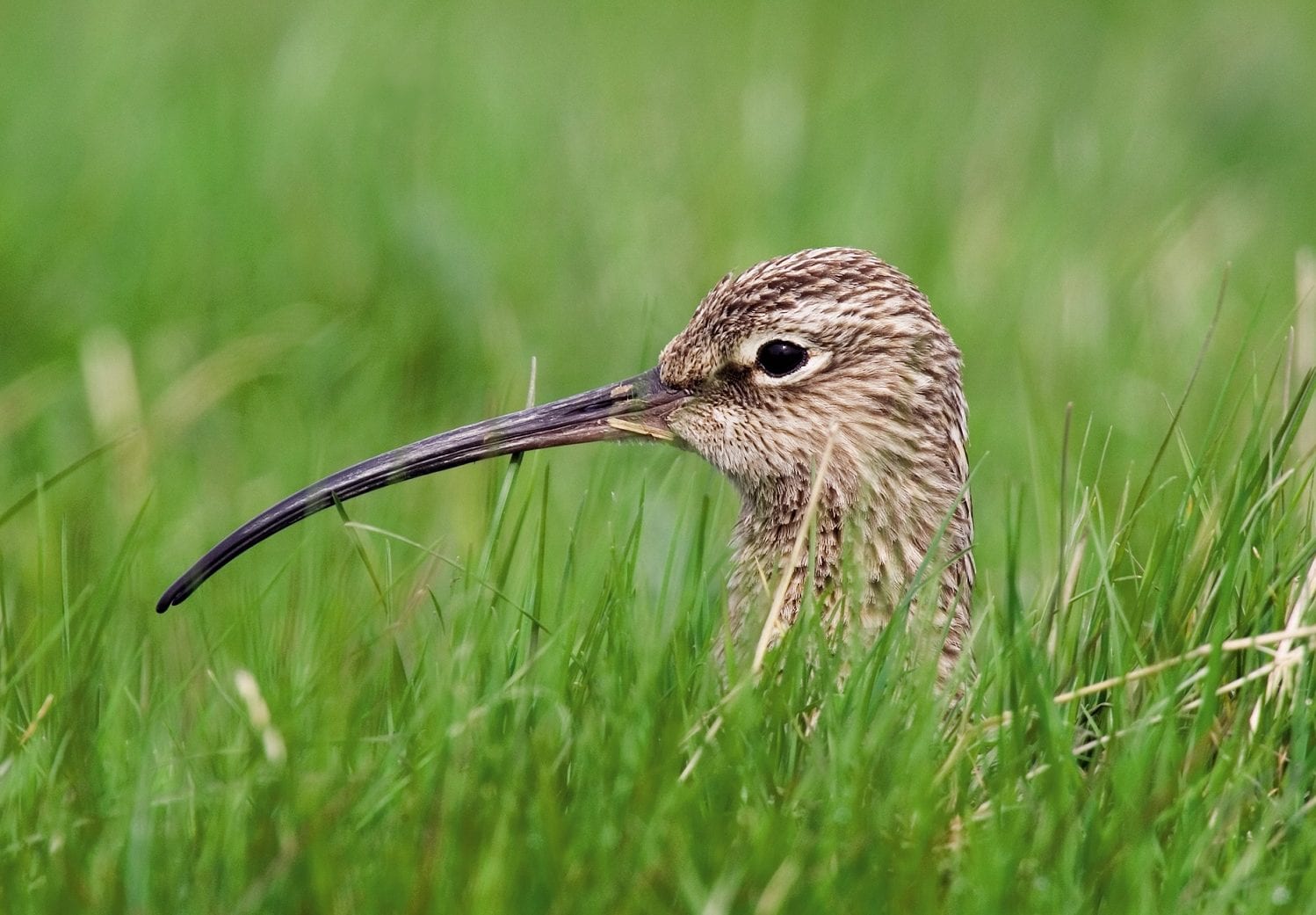
Curlew EIP harnesses people power to help stem population declines
The Irish Breeding Curlew European Innovation Project (EIP) may be wrapped up and the final report written, but its impact is sure to be felt for years to come.
A multi-partnership project involving BirdWatch Ireland, the Irish Natura and Hill Farmers Association (INHFA), the Irish Grey Partridge Conservation Trust and Teagasc, the Curlew EIP looked to address factors contributing to the decline of breeding Curlew in Ireland. Working closely with the farming community in South Leitrim and South Lough Corrib, the project developed and trialled new and innovative approaches to help stem the decline of Ireland’s breeding Curlew population.
 Predation of nests and chicks is also known to be one of the main reasons for the decline of Curlew populations. To address this The Curlew EIP developed “Conservation Keepering”, a tool which placed international best practice, ethics and standards in predator management at its core. It trialled the Conservation Keepering Option, an agri-environmental measure with 33 farmers over four years from 2020 to 2023. Through this innovative approach farmers carried out predator management to reduce predator populations in and around important Curlew breeding sites during the breeding season, and provided landscape level support to the project’s Conservation Keepers.
Predation of nests and chicks is also known to be one of the main reasons for the decline of Curlew populations. To address this The Curlew EIP developed “Conservation Keepering”, a tool which placed international best practice, ethics and standards in predator management at its core. It trialled the Conservation Keepering Option, an agri-environmental measure with 33 farmers over four years from 2020 to 2023. Through this innovative approach farmers carried out predator management to reduce predator populations in and around important Curlew breeding sites during the breeding season, and provided landscape level support to the project’s Conservation Keepers.




Innovative approaches
Breeding Curlew represent one of the highest conservation priorities in Ireland, with only 105 confirmed breeding pairs recorded during the 2021 National Parks and Wildlife Service (NPWS) survey. This represents a 98% decline in breeding pairs in the Republic of Ireland since the 1980s. Habitat loss and degradation (as a result of agricultural intensification, land drainage and afforestation) has been identified as one of the primary threats to breeding Curlew populations in Europe and, though multi-faceted, addressing this was a key element of the Irish Breeding Curlew EIP. Over three years (2020 – 2022), 35 farmers trialled the “Curlew Habitat Option”– a results-based agri-environmental measure to manage Curlew breeding habitat that was supported with the provision of specialist advice and farmer training. Capital Works were also developed and trialled to support this measure and improve breeding habitat by, for example, removing scrub or creating chick feeding habitat. Participating farmers were financially rewarded for delivering high-quality Curlew breeding habitat, with payment levels linked to annual field scores. Breeding season sward height, wet features (suitable for chick feeding), scrub encroachment and predator habitat were some of the elements scored. Project results showed a highly significant statistical increase in field scores (and therefor habitat quality) on fields entered into the Curlew Habitat Option for at least two years, in both Leitrim and Lough Corrib. Farmer training and support was shown to be a key factor in the achievement of habitat improvements (and increasing field scores). In the first year of the scheme Covid-19 restrictions prevented farmer training from taking place, and 2020-2021 were the only years between which there was no significant increase in field scores.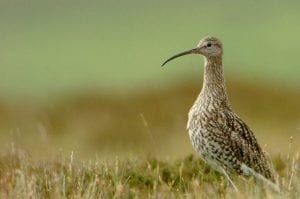 Predation of nests and chicks is also known to be one of the main reasons for the decline of Curlew populations. To address this The Curlew EIP developed “Conservation Keepering”, a tool which placed international best practice, ethics and standards in predator management at its core. It trialled the Conservation Keepering Option, an agri-environmental measure with 33 farmers over four years from 2020 to 2023. Through this innovative approach farmers carried out predator management to reduce predator populations in and around important Curlew breeding sites during the breeding season, and provided landscape level support to the project’s Conservation Keepers.
Predation of nests and chicks is also known to be one of the main reasons for the decline of Curlew populations. To address this The Curlew EIP developed “Conservation Keepering”, a tool which placed international best practice, ethics and standards in predator management at its core. It trialled the Conservation Keepering Option, an agri-environmental measure with 33 farmers over four years from 2020 to 2023. Through this innovative approach farmers carried out predator management to reduce predator populations in and around important Curlew breeding sites during the breeding season, and provided landscape level support to the project’s Conservation Keepers.
Results of the Curlew EIP
Curlew (and other breeding waders, where present) surveys were carried out between March and May annually to determine the number of confirmed, possible and probable breeding pairs, as well as breeding productivity (measured by the number of successfully fledged chicks). Populations in Corrib were stabilised over the lifetime of the project and showed some growth by 2023, increasing to 11 pairs.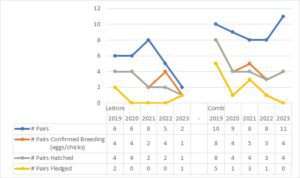
Total no. of pairs, pairs confirmed breeding, hatching, and fledging by area and year.
Unfortunately, a complex range of factors led to a different outcome in South Leitrim. Leitrim had poor productivity in most years and consequently, populations showed continual decline. Predator pressure and fragmented habitat due to afforestation and scrub invasion around the bogs where Curlew were breeding were shown to be impacting on breeding success. Scrub and forestry are known to hold higher numbers of predators and lead to an increase in predation of breeding Curlew (and other ground-nesting birds) for up to a kilometre from the edge of the woodland. If local populations are to be saved in Leitrim, substantial effort will need to be made to address these issues. As an umbrella species, measures carried out to protect breeding Curlew benefit other breeding waders. Populations of three other Red-listed species of Conservation Concern – Lapwing, Redshank and Snipe – all showed a marked increase since the project began, with total populations increasing by 215 % from 27 to 85 breeding pairs.Total number of pairs for all species, by year in the Corrib project area.
Satellite Tagging breeding Curlew
The project also carried out satellite tagging of breeding Curlew to learn about their habitat usage and home range during the breeding season. Adult (mainly male) Curlew were satellite tagged allowing project staff to locate their nest and erect predator-proof fences around them, and focus their habitat and predator management work. The project also collaborated with NPWS and pooled their data for analysis on the home range size needs of Ireland’s breeding Curlew. The results of this show that breeding Curlew need a minimum of a 2km radios free from afforestation around their nest sites. It is anticipated that this work will help influence Ireland future afforestation policy. Through satellite tagging and colour-ringing, the project also identified new information on the behaviour of non-breeding birds, which were shown to hold territory and exhibit breeding calls. This was also found to be the case with other satellite projects across the UK and Europe and it is not fully known whether these are juvenile birds learning breeding behaviour, or birds that are attempting to breed, but who have not found a mate. Only two of the 12 birds caught and colour-ringed returned to the project area in subsequent years. It is though that this is a result of high adult mortality in an aging population. Look out for birds with blue and white colour rings above the knee joint, with an individual marker ring on the LA – yellow and beginning with the letter A.People Power
The measures in the Curlew EIP require a team of dedicated and engaged people to carry them out. The project’s success is directly linked to the farmers and landowners across Lough Corrib and South Leitrim, whose commitment to saving the biodiversity on their farms and in their local area was key to the project's success. The interest in nature amongst members of the farming community is unquestionable, but it is vital that this is met with support, both financial and advisory, if we are to help to reverse the decline of threatened farmland bird species.Looking forward
The Curlew EIP concluded in December 2023, with many of its measures adopted into ACRES Cooperation (CP) either directly or in a revised form. Work by the Curlew EIP and by BirdWatch Ireland using its hotspot mapping showed that many important areas for breeding Curlew and other waders were located outside of ACRES CP areas and was instrumental in securing the inclusion of a National Breeding Wader EIP and a Shannon Callows EIP in Ireland’s new agri-environmental programme under the Common Agricultural Plan (CAP). The National Breeding Wader EIP comes on stream in 2024 and will provide for breeding waders nationally going forward. The Irish Breeding Curlew EIP was funded by the Department of Agriculture Food and the Marine’s, European Innovation Partnership (EIP) fund. Read the full report here: The Irish Breeding Curlew EIP - End of Project Report March 2024

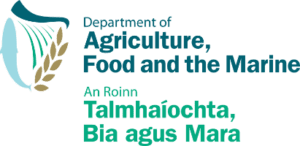
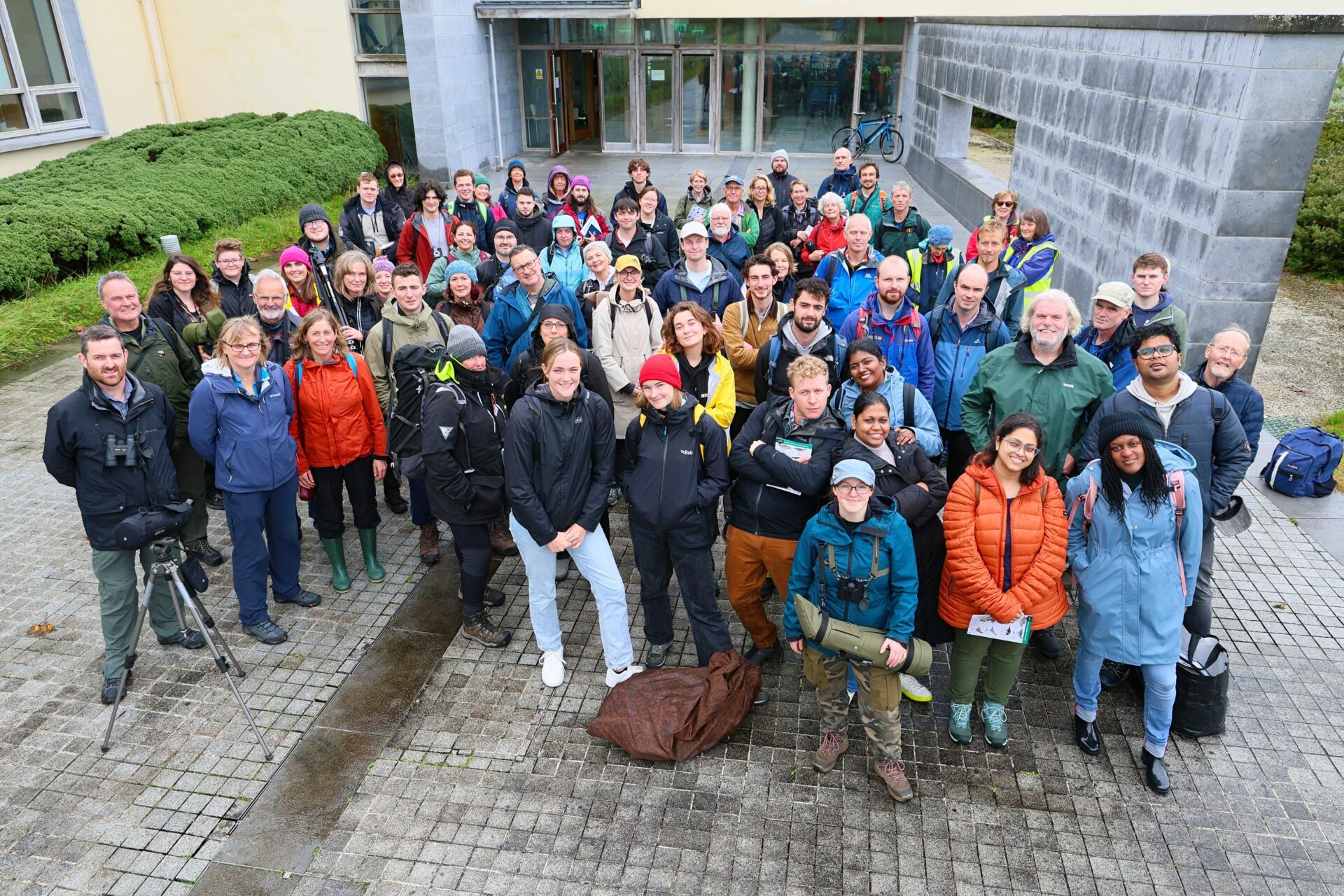
Record attendance at I-WeBS workshops highlights public appetite to support biodiversity
The high attendance at two recent introductory Irish Wetland Bird Survey (I-WeBS) workshops in Galway highlighted an increasing public desire to learn about and support biodiversity.
Organised by BirdWatch Ireland in collaboration with Galway County Council and Galway City Council with the support of the NPWS, the workshops were aimed at showing birdwatchers how they can help monitor wintering waterbird populations at Inner Galway Bay and in turn, inform their conservation. Additionally, BirdWatch Ireland also hoped to recruit new skilled I-WeBS observers to survey this important site during the 2023/ 24 season.
Over 120 people attended the workshops across the two days. The training days, which involved a combination of informative talks about the I-WeBS survey followed by an outdoor field method demonstration, were held on the 23rd September at Knocknacarra Community Centre and the 6th of October the Marine Institute. Within the talks, attendees found out about why it is so important to survey our wintering waterbirds as well as some hot tips for identifying and counting waterbirds. To pick up some tips and tricks for identifying waterbirds, take a look at the I-WeBS training tools.


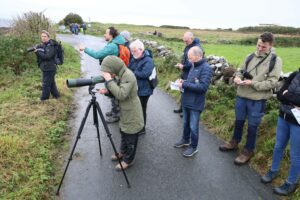
Workshop participants getting a glimpse of some interesting waterbirds at Rinville.
The outdoor portion of the events – which took place at Rusheen Bay and Rinville – proved fruitful, offering views of waterbirds such as Lapwing, Curlew, Turnstone and Sandwich Terns, to name but a few. Although not a waterbird, the sight of a beautiful female Wheatear hopping along the nearby rocks was a delightful bonus. Attendees brought with them a wealth of relevant experiences, skills and interests, with a high number of local university students and ecological consultants particular taking part. The interactive and informative workshops have thus far resulted in the recruitment of 30 new I-WeBS volunteers for Inner Galway Bay, with many more attendees choosing to sign up to survey at other sites. Meanwhile, the events inspired many more to get involved with their local Galway Branch of BirdWatch Ireland. In addition to boosting survey volunteer numbers, the recent events also offered a fantastic platform to spread the word about I-WeBS – a National Parks and Wildlife Service (NPWS) funded monitoring project that has been running since 1994. Every year between September and March, close to 500 I-WeBS volunteers record wintering waterbirds at important wetland sites around the country. Irish wetlands are extremely important for the survival of these birds and I-WeBS keeps track of how these birds are faring so that informed conservation action can be taken.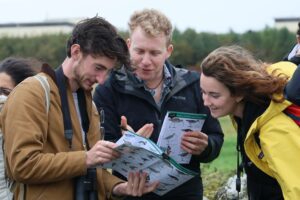
Participants working together to identify birds at Rinville.
The recent I-WeBS workshops focused predominantly on Inner Galway Bay – an internationally important site for wintering waterbirds, hosting over 20,000 birds every season. Inner Galway Bay is a site of international importance for the Great Northern Diver and Light-bellied Brent Goose, meaning that it regularly supports one per cent or more of the flyway population of these species. It is also a site of national importance for many birds, including Red-listed species such as Shoveler, Grey Plover, Dunlin, Redshank, Black-tailed Godwit, Bar-tailed Godwit and Lapwing. In all, the workshops proved to be a great success, in large part due to the strong collaboration between BirdWatch Ireland, BirdWatch Ireland’s Galway Branch, Galway County Council, Galway City Council, the Marine Institute and Knocknacarra Community Centre. BirdWatch Ireland is particularly grateful to Galway County Council and Galway City Council for funding binoculars and telescopes, which will be available for survey volunteers to rent from Galway City Library.
